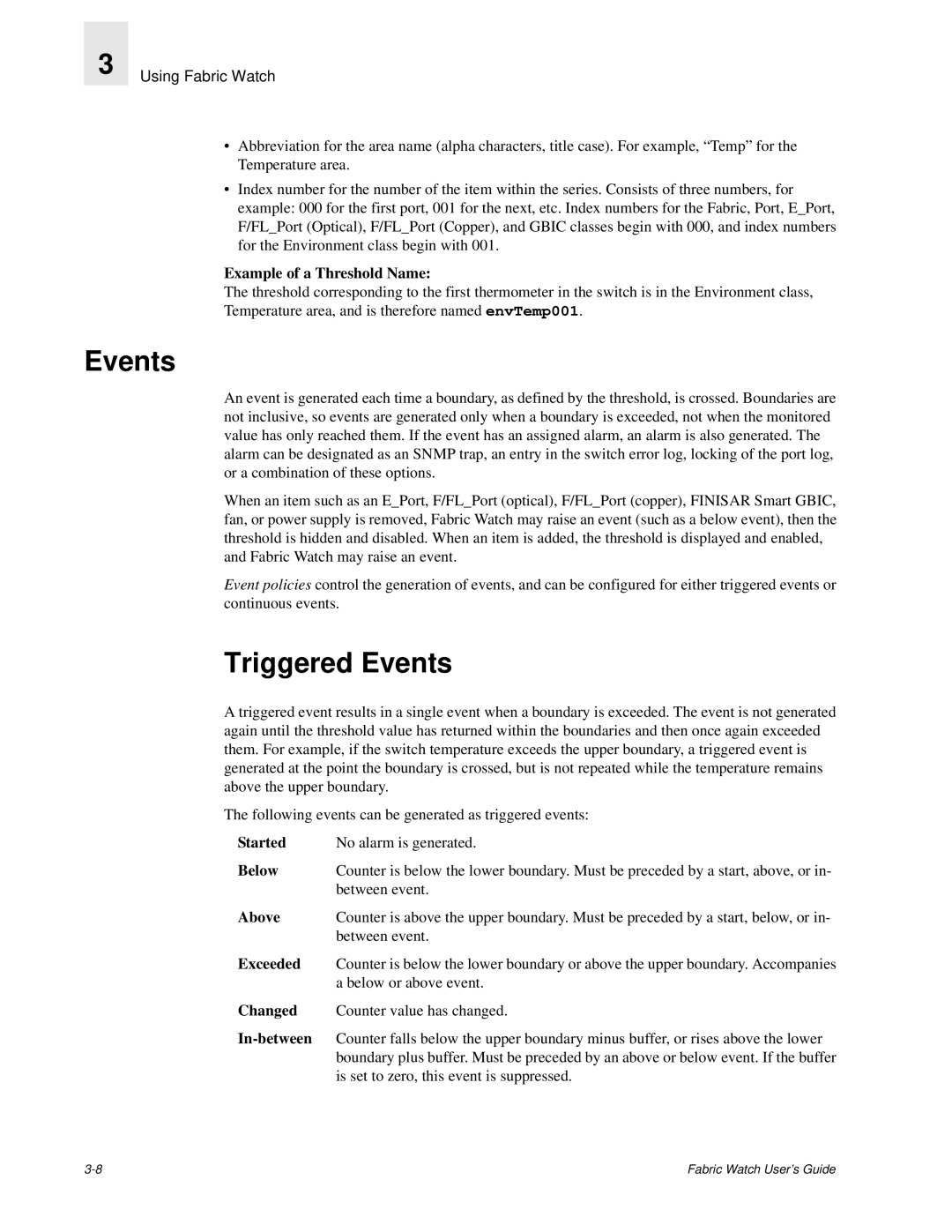Brocade Fabric Watch specifications
Finisar Brocade Fabric Watch is an advanced network management solution designed to simplify the monitoring and administration of storage networks. Its primary goal is to enhance the performance and reliability of data center operations by providing comprehensive visualization and management capabilities.One of the standout features of Fabric Watch is its ability to deliver real-time monitoring of the health and performance of network devices. This is critical for organizations that require constant uptime and high availability for their storage systems. Fabric Watch continuously assesses the status of switches, routers, and other devices within the fabric, enabling administrators to quickly identify potential issues before they escalate into problems that could disrupt operations.
The technology behind Fabric Watch encompasses various innovative aspects that enhance its functionality. For instance, the solution uses advanced analytics to assess historical performance trends, allowing IT teams to predict potential bottlenecks and optimize resource allocation effectively. This predictive capability not only improves operational efficiency but also reduces the risk of downtime, ensuring that organizations can maintain consistent access to critical data.
Furthermore, Fabric Watch supports a range of protocols and standards, making it compatible with various environments and configurations. This flexibility is crucial for companies that have heterogeneous systems and diverse technology stacks. As a result, organizations can deploy Fabric Watch across different platforms, ensuring a unified approach to network management.
Another notable characteristic of Fabric Watch is its intuitive user interface, which makes it user-friendly for administrators of varying skill levels. The dashboard presents a centralized view of the entire storage network, complete with graphical representations of performance metrics, alerts, and health statuses. This visual approach facilitates rapid decision-making, allowing teams to address issues quickly and maintain optimal performance.
In addition, Fabric Watch integrates seamlessly with existing data center management tools and workflows, providing a holistic view of the infrastructure. This integration capability supports broader initiatives around automation and orchestration, enabling organizations to create more streamlined and efficient operational processes.
In summary, Finisar Brocade Fabric Watch stands out as a robust solution for managing and monitoring storage networks. Its real-time monitoring, predictive analytics, compatibility across platforms, and user-friendly interface make it an essential tool for IT teams seeking to enhance performance and reliability in today’s demanding data environments. By employing Fabric Watch, organizations can better navigate the complexities of their storage networks, ensuring they remain agile and responsive to business needs.
